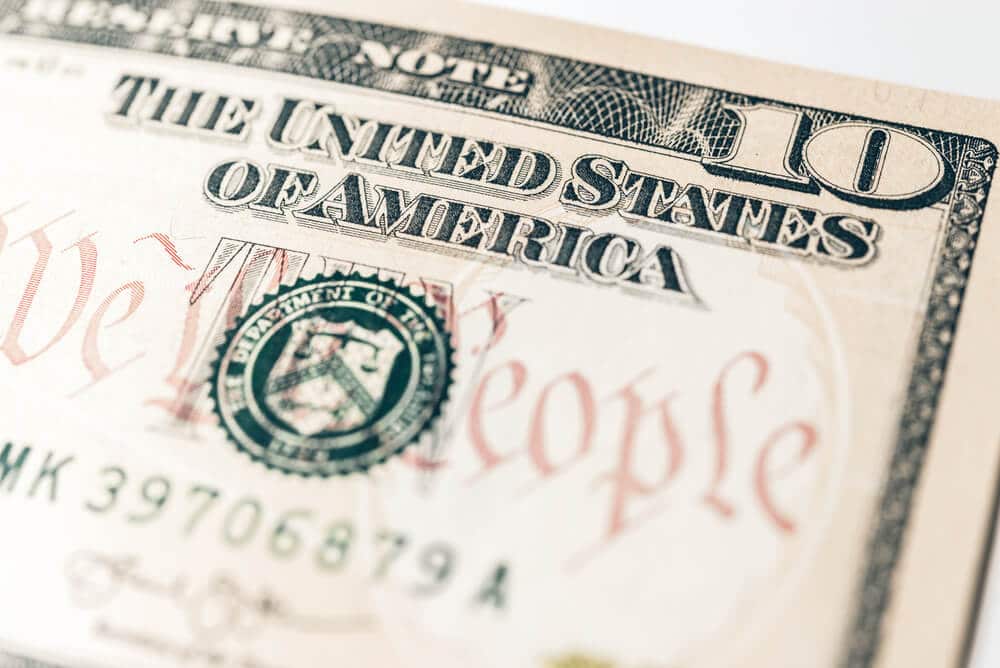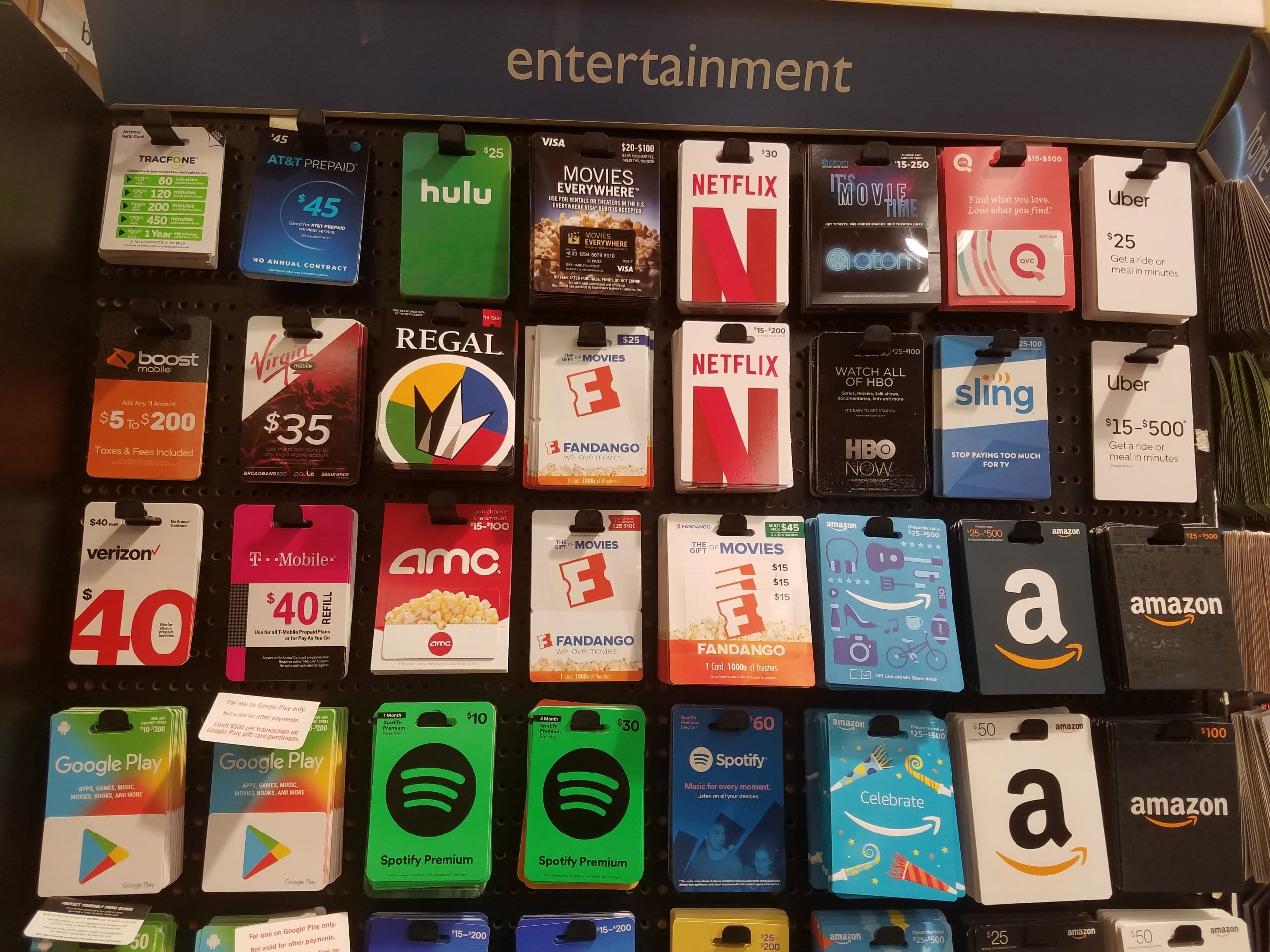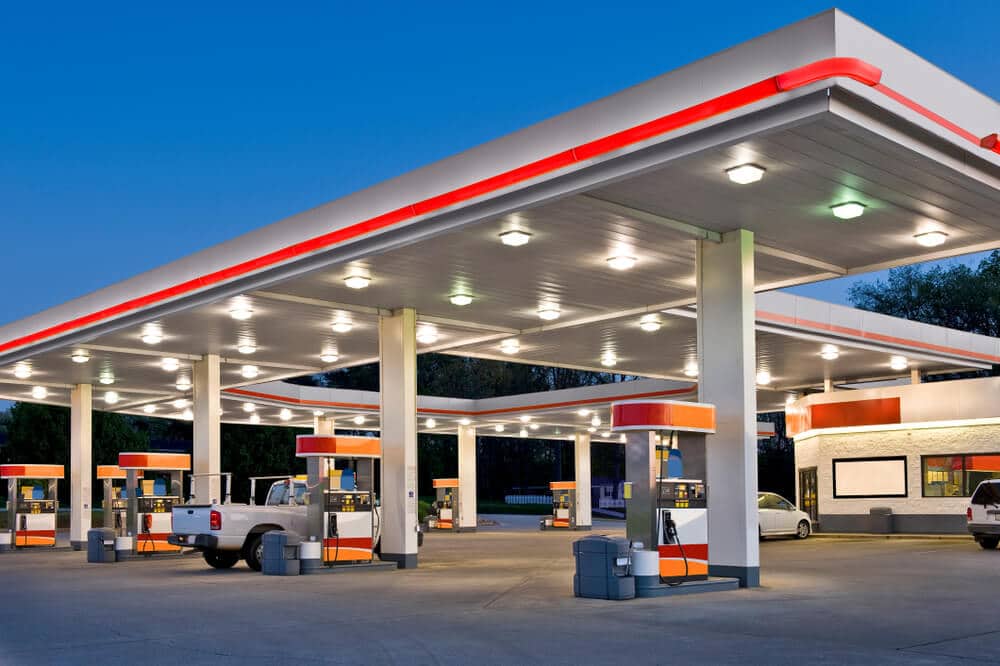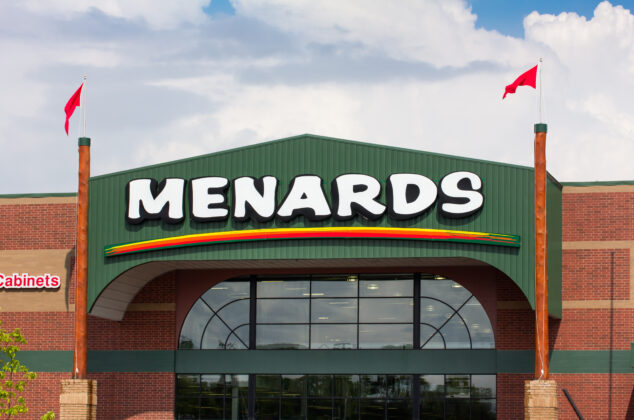Short Answer — A 1950 $10 bill may be worth as little as its face value ($10) or as high as several hundred dollars depending on its condition, serial number, and unique or rare printing features. For more information about how to find the value of a 1950 $10 bill, see below.
How Much Is a 1950 $10 Bill Worth?
Most 1950 $10 bills are not high in value. Age alone doesn’t make bills worth more money on the collectible currency market. The bill may be worth as little as its face value of $10.[1]
The bill may not even be quite as old as you think; unlike coins, which are identified by the year they’re minted, bills are identified by the year that the design was adopted.
A letter (series 1950A, 1950B, etc.) is added for every minor change to that same design.[2]
However, collectors are willing to pay considerable sums for bills with unique traits like unusual misprints or unique serial numbers.
A bill’s value depends on several factors: its condition, serial number, whether it includes a star note, and whether it includes any notable misprints.[3]
We detail these factors below to help you determine the worth of your 1950 $10 bill.
Condition
The better the condition of a bill, the more money it’ll be worth.
Grading systems may vary somewhat depending on the appraiser, but usually consider whether the bill has any wear, folds marks, tears, water damage, or damaged corners.
“Crisp uncirculated” currency is of the highest value, featuring no fold marks or wears, a crisp and deeply colored surface, and sharp corners. [4]
An uncirculated 1950 $10 bill with no other significant features will usually sell for around $35.[5] Bills in lesser condition will fetch smaller prices.
Serial Numbers and Star Notes
The serial number is a collection of numbers and letters appearing on the bill to denote each bill’s unique identity and the series year.
Some bills also include a “star note,” a suffix added to the serial number when a bill is replaced due to damage during production.[2]
The most valuable star notes are those older than the year 1935, so having a 1950 $10 bill with a star note is not enough to make it worth more than face value.[6]
Other irregularities in the serial number can make a 1950 $10 bill more valuable, however. The most popular serial oddities include:[7][8]
- Solid serial numbers: Made up of only one number, e.g., 33333333
- Low serial numbers: Made up of two or less digits, e.g., 00000003
- Trailing zeros: A number followed by zeros, e.g., 30000000
- Ladders: A sequence of numbers, e.g., 12345678
- Radar serial numbers: Read the same forward or backward, e.g., 34444443
- Flippers: Read the same upside down, e.g., 86688998
- Repeaters: Made up of a number that repeats, e.g., 31403140
- Binary: Made up of only “0” and “1,” e.g., 10010011
- Standalones: Made up of a number surrounded by zeros, e.g., 00030000
It’s difficult to name an exact value for each of these “fancy” serial number types since your valuation will depend on the other factors discussed here.
Still, if you have a bill in good to excellent condition, these features can increase its value even further. Many bills of these types in good condition sell for $50 to $100 or more.[9]
Valuable Misprints
Misprinting refers to any errors that occurred during the printing process.
It’s important to note that no misprint is unique. Often, when one mistake is made, many more notes are printed the same way before the problem is detected. The value is often based on the rarity of the misprint.
Some examples of misprints include seals and serial numbers appearing in the wrong spot, missing elements, mismatched serial numbers, inverted signatures, and ink smears — each having its own unique value.[10]
You might have noticed something missing on a 1950 $10 bill when compared to current bills: it doesn’t include the motto “In God We Trust.” This isn’t a misprint — the words weren’t added to the $10 bill’s design until 1964.[11]
Upside down flags printed on the bill’s back are also not considered a misprint and add no value to the bill.[12]
Where to Buy/Sell
Since the value of a 1950 $10 bill varies so widely, your best bet when buying or selling is to consult an expert on currency collection, such as Manifest Auctions or American Rarities.
The eBay Coins & Paper Money marketplace can also be a good place to buy and sell, connecting collectors and sellers worldwide.
 William Lipovsky
William Lipovsky







I have a 1950 $10 with the number G10189891F printed in Chicago. It’s in good condition. Is it worth anything?
Hi Chelle,
Unfortunately, it doesn’t look like your serial number contains any unique identifiers. With the bill in less than mint condition, it’s likely only worth face value. Sorry I couldn’t bring you better news!
I have a 1950 $10 bill D42992598A with F149 printed on the front and 1240 printed on back. Could this bill be worth something?
Hi Cheryl,
It looks like your serial number doesn’t contain any unique characteristics that would add to the value. The other two numbers that you mentioned are the plate serial numbers, which simply identify the plate with which the bill was printed. These numbers do not affect the value of the bill. If the bill is in mint condition, it may be worth up to $20. If it shows any signs of wear, it’s likely only worth face value.
I have a $10 bill from 1950 (Series C). I don’t think anything about it is rare as far as the serial #B 83057143 H but the misalignment is pretty significant. The irght side blank space is about double the size of the right AND the bottom of the bill is even further obviously misaligned. I don’t believe it was cut because all sides have that sort of double line. Is it worth anything?Thanks.
Hi Sandy,
You’re right that the serial number doesn’t seem to contain any valuable oddities. But a significant misalignment can definitely increase the value of a bill.
How much dose a 1950 10 dollar bill worth serial number J12582237A
Hi Juan,
Your serial number doesn’t seem to contain any unique identifiers that would increase the value. Unless it is in mint condition, the bill is likely only worth face value ($10). Sorry I couldn’t bring you better news!
I have 1950 ten dollar bill,that isn’t in the best of shape and doesn’t seem to have a unique pattern to the serial number,and I understand that it’s upside down flag has no value but it’s alignment is way off to the top left and the back of the bill is even more off than the front. Any information is much appreciated.
Hi Cary,
A major misalignment can sometimes increase the worth of a bill significantly.
We have a 1950E ten dollar bill in excellent condition. Serial #G64885439H Would like to know it’s value and could you please tell us why it doesn’t say In God We Trust on it.
Hi Gina,
Unfortunately, it doesn’t look like your serial number contains any unique identifiers that would add to the value. Even so, a mint condition E-series bill can go for up to $35 if it doesn’t show any signs of wear and tear.
The history of “In God We Trust” is quite interesting — although the motto has appeared on certain coins since 1864, printed bills did not include these words until the 1964 series (which was the series immediately after the 1950 series). Congress voted to make “In God We Trust” the national motto in 1956 and the first bills including these words were produced 8 years later. You can read more about the evolution of the national motto on the U.S. Department of Treasury website.
The article has been updated to reflect this information.
I have a 1950 E series and i honestly couldnt tell you if its real the top looks like the machine may have cut a little lopsided. G94302441H flag error as well
Hi Mark,
It looks like your serial number doesn’t contain any unique identifiers that would increase the value. The upside down flag, as noted in the article, is so common that it isn’t considered a valuable error. As far as the lopsided cut, if it’s only a slight error, it likely doesn’t add to the worth of the bill. It’s most likely that your bill is only worth face value, particularly if it’s in less than mint condition. To be absolutely certain (or if you’re just curious), a currency appraiser would be able to tell you whether the lopsided appearance is due to a deliberate cut after printing or a legitimate misprint. A currency appraiser would also be able to confirm the authenticity of the bill itself. I hope this helps!
I have a 1950 $10 bill, Serial #B 35794657 I. It is also miscut.
I would like to know if it is worth anything ? I don’t know how to put a picture on here.
I have a 1950 $10 Bill New York B 00517416*
Hi Liberty,
It looks like your serial number doesn’t contain any unique identifiers that would increase the value. Unless the bill is in mint condition, it’s likely only worth face value.
I have 2 1950 $10 bills.
1). Serial L80499283B, is a 1950 b series
2). Serial G04042573G, is a 1950 c series, pretty much looks uncirculated except for one tiny tear. Is still crisp and has no signs of ever being folded.
Hi Stephanie,
It doesn’t look like either of your serial numbers contain any unique identifiers that would increase the value. The one in nearly mint condition may be worth up to two times face value ($20). If the other one is not in mint condition, it’s likely only worth face value.
1950 $10 bill serial number B11451430B minted in NY not mint but in good condition.
Hi Eric,
It doesn’t look like your serial number contains any unique identifiers that would make it more valuable. With the bill not in mint condition, it’s likely only worth face value. Sorry I couldn’t bring you better news!
1950 10$ B86922924B mis print not in mint condition
Hi Daisia,
It looks like there aren’t any unique identifiers in the serial number. Whether the misprint adds any value will depend on how severe and how rare it is. A severe misprint, such as a noticeable off-center misalignment, can increase the value up to 10 times. Common misprints, such as the upside flag, are so frequent that they do not add to the value. Unless you have a very rare misprint, with the bill not being in mint condition, it’s likely only worth face value.
$10 bill with serial number B1686996*, some folding but no wear/tear or dog ears.
Hi Kristin,
It looks like your serial number doesn’t contain any unique identifiers. With even minimal signs of wear, such as fold marks, the bill is likely only worth face value. Sorry I couldn’t bring you better news!
$10.00 BILL WITH NO
F10285577*
Hi Diana,
It doesn’t look like your serial number contains any unique identifiers, and the star does not increase the value either. If the bill is in mint condition, it may be worth up to $20. Otherwise, it’s likely only worth face value.
I have a $10 bill it’s a D series and the cereal number is L78568626C, but it does have a bunch of folds. How much would it be worth.
Hi Rish,
It doesn’t look like the serial number contains any unique identifiers. Since it’s not in mint condition, the bill is probably only worth face value. Sorry I couldn’t bring you better news!
1950 B Series $10 with serial number B1957439G The left side is cut closer then the right.
Hi Laurie,
Unfortunately, it doesn’t look like the serial number contains any unique identifiers. The asymmetrical cutting could add to the bill’s value, depending on how dramatic it is. A very noticeable misalignment can increase the worth of the bill up to ten times the face value, so it may be worth up to $100. On the other hand, a very minor misalignment likely won’t increase the value at all. If the cutting is noticeably off, it may be worth getting appraised by a local currency dealer to know for sure what it’s worth (that way, you’d also be able to verify that the bill hasn’t simply been cut to look misaligned).
WHAT IS TH EVALUE OF A $10.00 BILL FROM 1950 F65360123C ?
Hi Lucy,
It doesn’t look like the serial number contains any unique identifiers. If the bill is in mint condition, it may be worth up to $20. If it shows any wear, it’s likely only worth face value.
does the 1950 series ten dollar bill supposed to have (IN GOD WE TRUST) PRINTED ON THEM.
Hi Robert,
No, 1950 ten dollar bills will not bear the motto “IN GOD WE TRUST.” These words don’t appear on the ten dollar bill until the 1964 series.
does the 1950 series ten dollar bill supposed to have (IN GOD WE TRUST) PRINTED ON THEM. R
I have a 1950’s 10 dollar bill series G38312212C and B29518289E,
2 dollars 1953 A67285776A (1953),
5 dollars B84588453A (1950),
20 dollars L19827774D (1950)
Hi Marcin,
The 5 dollar is so close to being a repeater! Unfortunately, it doesn’t quite work with the 3 at the end instead of an 8. It doesn’t look like the other serial numbers contain any notable identifiers either. Sorry I couldn’t bring you better news!
I have a 1950 ten dollar bill series 1950 E
Seriel number L44507407D
Not mint condition but I was wondering about the signatures in it. I saw a picture of another 1950 ten dollar bill and it had different signatures for the secretary of treasury and and treasurer of the United states.
Hi Trina,
The signatures can vary because a “1950 ten dollar bill” wasn’t necessarily printed in 1950. Unlike coins, which are identified by the year they were minted, bills are identified by the year that the last major change was made to the design — so a Series 1950 bill just means that the design was made in 1950. The series letters (Series 1950A, 1950B, etc.) are added for each minor change to the design, including changes in administration which lead to different signatures. While you’d expect the signatures to match within series A, B, C, etc., they won’t necessarily match among all 1950 bills.
The article has been updated to reflect this information.